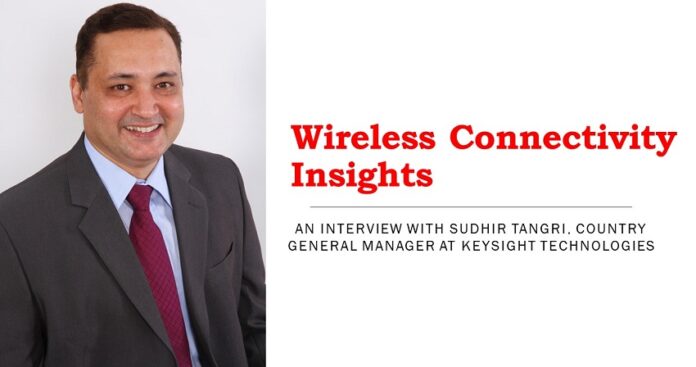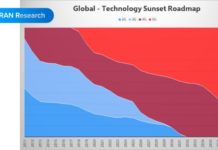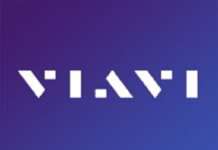
Electronics Media had a compelling interview with Sudhir Tangri, Country General Manager at Keysight Technologies where he emphasizes the growing capacities of wireless technologies due to 5G, WiFi7, and the potential of 6G, significance of Massive MIMO in boosting network performance and transitioning to non-terrestrial networks. On conclusion he shares problems network operators and device manufacturers face during the rollout, and how Keysight Technologies support them.
What are some of the future trends and challenges in wireless connectivity that Keysight Technologies is actively researching or anticipating?
Sudhir Tangri – Capacity and capabilities for wireless technologies including cellular and connectivity are enhancing due to the deployment of 5G, WiFi7, and due to limitless connectivity envisioned in 6G. Significant R&D investments are being made by chipset companies, UE manufacturers, and NEMs to enhance these technologies. Moreover, service providers are quickly adopting these technologies and customize use cases to suit their country and market needs.
As we stabilize broadband services in 5G, we are looking at newer use cases for fast and easy-to-deploy cloudified networks in private 5G network space. We are also looking at 5G in wearables, medical, surveillance, and other applications. For ubiquitous coverage, the industry is looking for mobile phones to be connected to non-terrestrial networks through satellite and/or handover to available Wi-Fi networks. We also expect 5G and later 6G to be a platform for VR/XR-based services. 6G will further enable metaverse and time engineering networks for advanced use cases. This way the upward trend in wireless technology will continue.
Keysight is a leading measurement solutions provider for the entire wireless ecosystem. Our test solutions are specifically designed for the early stage of R&D as well as product validation and offer several test functions in chipsets, UE, ORAN, Core, data network, cloud, and security space.
Can you explain the role of Massive MIMO in enhancing network performance, and how Keysight’s testing solutions help validate and optimise these complex systems?
Sudhir Tangri- One of the ways of enhancing the data capacity of wireless networks is to adopt massive MIMO and multiuser MIMO. MIMO works both for FR1 and FR2 and can support several layers of data transmission. Keysight offers full validation of MIMO capabilities both for UE and ORAN with several configurations of products including UE-Sim, MTRX, and MBD. MiMO Beam Detect (MBD) is specifically designed for massive and multiuser MIMO testing which allows both time and phase coherency across all 64 ports to simultaneously test for beams and layers of data.
In addition to test hardware and software, Keysight has a unique Wavejudge test solution for front haul which allows troubleshooting and interoperability testing at RF levels.
NEMO drive test and field-to-lab solutions based on NEMO allows our customers to fix network issues and optimize coverage and operations needed as per their network designs.
What are the unique testing and validation requirements for non-terrestrial networks, and how does Keysight Technologies cater to these needs?
Sudhir Tangri- The build-out of the 5G network, 5G Non-Terrestrial Networks (NTN) and proliferation of commercial LEO satellite networks to bring wider coverage of broadband access, early 6G research, as well as geopolitical tensions driving increasing investment in A&D, are sectors creating demand. And, several indigenous initiatives in multiple nations for local semiconductor development and manufacturing are driving the demand for test and measurement equipment. The Government’s “Make in India” initiative to create and encourage companies to develop, manufacture and assemble products in India incentivizes dedicated investments into manufacturing, increasing test and measurement equipment demand.
As a market-leading design, emulation, and test company, we continuously innovate for the market need. Keysight designs and manufactures custom MMICs in-house using advanced compound materials like Indium phosphide and gallium arsenide, and combines these high frequency, high-linearity chipsets with our patented digital signal processing to deliver world class performance and reliability so our customers can achieve their next breakthrough.
We recently unveiled Keysight ENA-X, the first midrange vector analyzer that produces fast, accurate error vector magnitude measurements and accelerates the characterization of 5G component designs by up to 50%. Demand for ever-increasing data speeds with ultra-low latency is pushing the next generation of wireless communications systems to operate at higher radio frequencies (RF). To ensure 5G New Radio (NR) transmitters meet these operational demands, RF engineers must fully test the design and performance of components such as power amplifiers (PA). Keysight’s new ENA-X addresses this need by giving engineers a midrange network analyzer platform that can perform multiple measurements with a single connection, which simplifies test setup, drives repeatability, and speeds testing.
Last year, Keysight introduced VXG Vector Signal to address 5G, 6G research, satellite communications and radar solutions. It’s the industry’s first vector signal generator with a scalable architecture enabling the most demanding wideband and multichannel test applications with frequencies up to 110 GHz. The VXG vector signal generator is helping customers deliver the next frontier of wireless technology such as 5G and satellite communications with a fully integrated, calibrated, and synchronized solution.
How does Keysight Technologies support developing and testing O-RAN solutions to enable interoperability and efficient deployment?
Sudhir Tangri- Open RAN (O-RAN) wireless networks are moving toward a virtualized, disaggregated RAN with standard interfaces. O-RAN based radio access networks represent the mobile communication industry’s move toward an open, virtualized, and disaggregated architecture. O-RAN revolutionizes how mobile network operators (MNOs) can build their radio access networks (RANs) using a multivendor, interoperable, and autonomous supply ecosystem.
RAN deployment for 4G and earlier generations of cellular technology relied on a single-vendor model. These networks used proprietary hardware and software systems, not compatible with other vendors’ products, creating a closed and uncompetitive environment. O-RAN breaks down the traditional hardware-centric RAN into building blocks (radios, hardware, and virtualized functions) using open and standardized interfaces. Network vendors can focus on specific building blocks rather than building an entire RAN. Operators gain the ability to mix and match components from multiple vendors. In this new model, organizations must perform testing to ensure multivendor components work together seamlessly and without compromising performance.
Keysight’s end-to-end Open RAN Architect solutions enable conformance, interoperability, performance, and security testing across the entire lifecycle with suites that are specifically tailored for chipset makers, software stack developers, network equipment manufacturers (NEMs), mobile operators, and Open Test and Integration Centers (OTICs).
What are some of the key challenges that network operators and device manufacturers face during the rollout, and how does Keysight Technologies support them in addressing these challenges?
Sudhir Tangri- Increasing average revenue per user (ARPU), local manufacturing of equipment with “Make in India” initiatives, and cost of infrastructure are some of the challenges the India Telecom market is currently facing. This is transcending to test and measurement market as well. Operators and NEMs are looking for more scalable and software AI driven measurement solutions for faster and economical roll out of services. At Keysight, we are helping solve these challenges by empowering customers to explore, design, and bring world-changing technologies to life. Our software-centric solutions address customer challenges and enable innovations across the design, development, and deployment workflow, allowing customers to push the boundaries of engineering by quickly solving electronic design, network emulation, and test challenges to create the best product experiences.


















